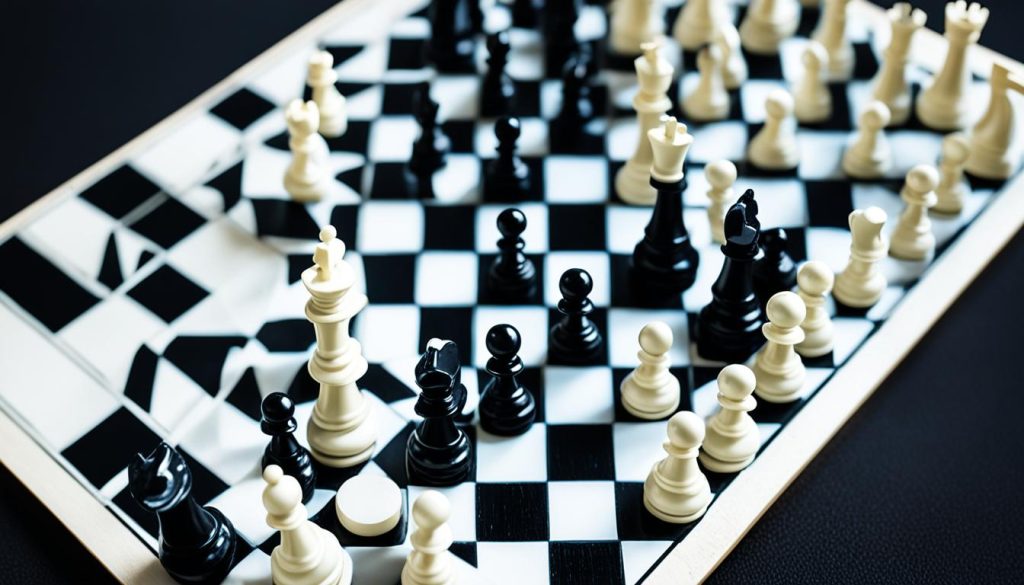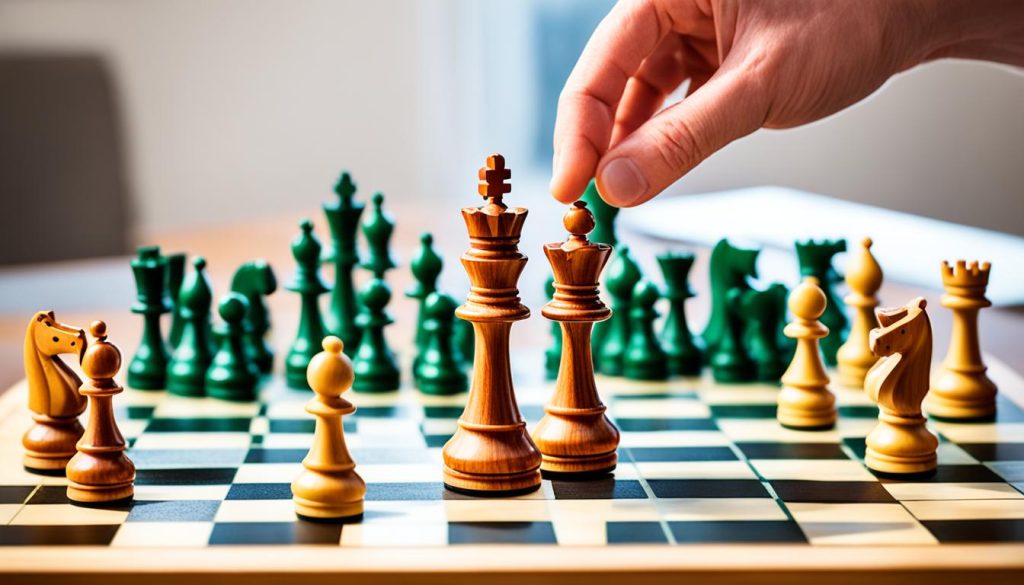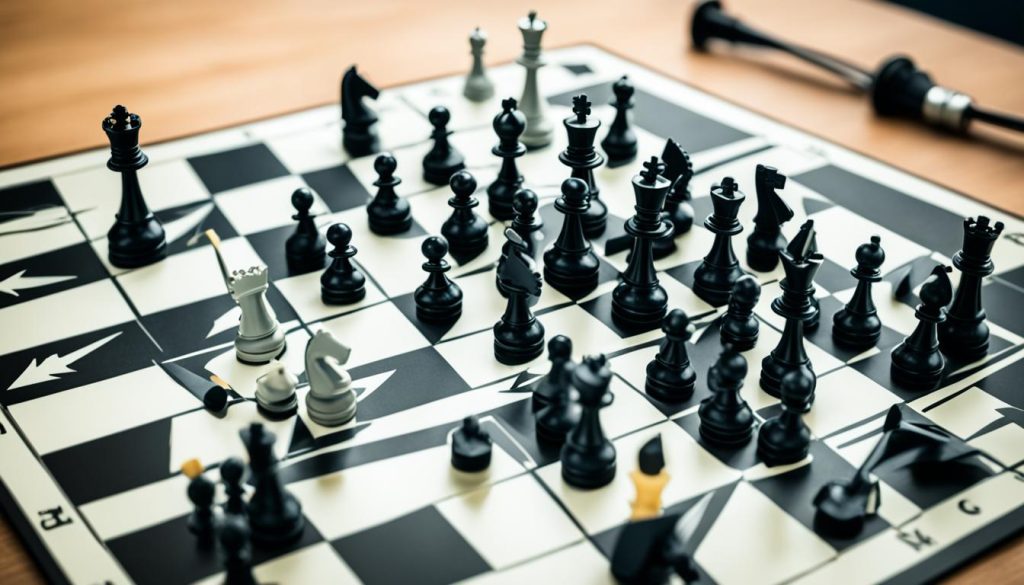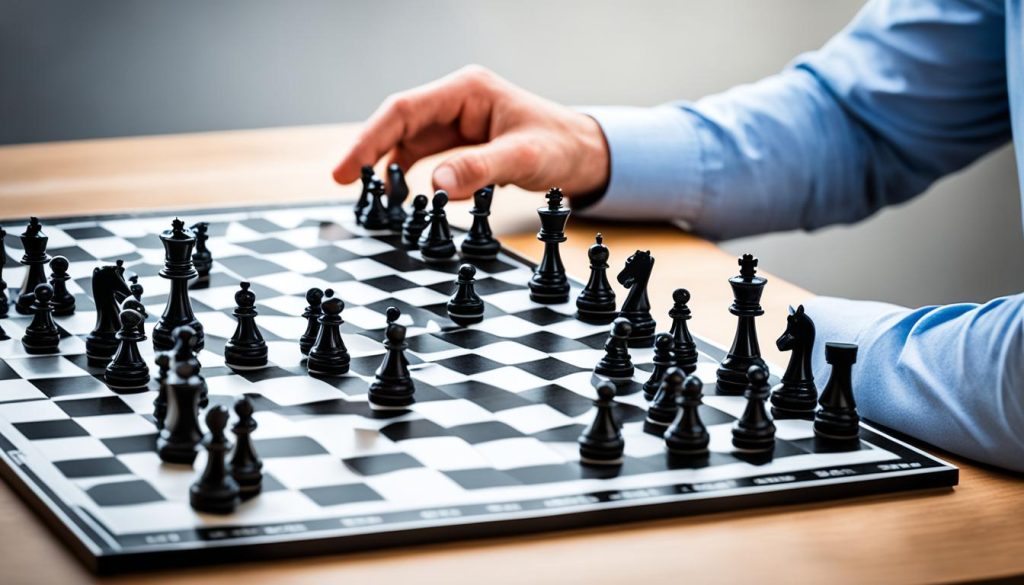Magnetic chess is a travel-friendly version of the classic game of chess, featuring a magnetic chess board and magnetic chess pieces that allow you to play chess anywhere. The magnetic board and pieces make it easy to set up and play, even on uneven surfaces. Magnetic chess sets are compact and portable, making them ideal for taking on trips, playing at cafes, or enjoying at home. The magnetic pieces stay in place, preventing them from falling off the board during gameplay. Magnetic chess sets come in a variety of designs, from simple to more elaborate, and can be a fun and engaging way to challenge oneself or play with others.
Introduction to Magnetic Chess
Magnetic chess is a variant of the traditional chess game that uses a magnetic board and pieces. The magnetic properties of the board and pieces allow the game to be played on any surface, making it a highly portable and travel-friendly option. The magnetic pieces stay in place, even if the board is tilted or moved, preventing them from falling off during gameplay. Magnetic chess sets are compact, lightweight, and easy to set up, making them a popular choice for players who want to enjoy the game on the go.
What is Magnetic Chess?
Magnetic chess is a variant of the classic game of chess that utilises a magnetic board and pieces. The magnetic properties of the board and pieces allow the game to be played on any surface, making it a highly portable and travel-friendly option. The magnetic pieces stay in place, even if the board is tilted or moved, preventing them from falling off during gameplay.
Benefits of Magnetic Chess
The main benefits of magnetic chess include:
- Portability: Magnetic chess sets are typically small and lightweight, making them easy to transport and play anywhere, from a cafe to a park.
- Durability: The magnetic pieces and board are designed to be durable and withstand regular use, ensuring the set lasts for years.
- Stability: The magnetic properties of the pieces keep them in place, even on uneven surfaces, preventing them from falling off the board during gameplay.
- Convenience: Magnetic chess sets are quick and easy to set up, allowing players to start a game quickly without the need for a dedicated chess table or complex setup.
- Versatility: Magnetic chess can be played by players of all skill levels, from beginners to experienced chess enthusiasts, making it a great option for family and group play.
Materials Needed
To play magnetic chess, you’ll need the following materials:
- Magnetic chess board: This is the playing surface, which has small magnets embedded in it to hold the pieces in place.
- Magnetic chess pieces: The pieces, including the king, queen, bishops, knights, rooks, and pawns, are also magnetised to stick to the board.
- Storage case or pouch: Many magnetic chess sets come with a compact carrying case or pouch to store and transport the board and pieces.
- Optional accessories: Some magnetic chess sets may include additional features, such as a scorecard, chess clock, or travel bag, to enhance the playing experience.

How to Play Magnetic Chess?
To set up a game of magnetic chess, follow these straightforward steps:
Setting Up the Game
1. Place the magnetic chess board on a flat, stable surface. 2. Arrange the chess pieces on the board according to the standard chess setup, with the white pieces on the first and second ranks, and the black pieces on the seventh and eighth ranks. 3. Ensure that each piece is securely attached to the board, as the magnetic properties will hold them in place. 4. Decide who will play as white and who will play as black.
Understanding the Pieces
The magnetic chess set includes the following pieces, each with their own unique movement patterns:
- King: Can move one square in any direction.
- Queen: Can move any number of squares in any straight line (horizontally, vertically, or diagonally).
- Bishop: Can move any number of squares diagonally.
- Knight: Can move in an L-shaped pattern, jumping two squares in one direction and one square perpendicular to that.
- Rook: Can move any number of squares horizontally or vertically.
- Pawn: Can move one square forward (except on their first move, when they can move two squares forward).
Basic Rules and Moves
The basic rules for playing magnetic chess are the same as those for traditional chess:
- The objective is to checkmate the opponent’s king, which means placing the king in a position where it has no legal move to escape capture.
- Players take turns moving one piece at a time, with white making the first move.
- Pieces move according to their unique movement patterns, as described in the previous section.
- Capturing an opponent’s piece involves moving your piece to the square occupied by the opponent’s piece, which then removes the captured piece from the board.
- Pawns can be promoted to a queen, rook, bishop, or knight when they reach the opponent’s back rank.
- The game ends in a draw when neither player can force a checkmate, such as in the case of a stalemate, insufficient material, or by agreement.

Strategies and Tactics for Magnetic Chess
As with traditional chess, there are several common opening strategies and moves in magnetic chess that players can use to start the game. Some popular openings include:
- The Ruy Lopez: A classical opening that begins with the moves 1. e4 e5 2. Nf3 Nc6 3. Bb5.
- The Sicilian Defence: A popular response to 1. e4, which begins with the moves 1. e4 c5.
- The King’s Gambit: An aggressive opening that starts with the moves 1. e4 e5 2. f4.
Regardless of the opening chosen, players should aim to develop their pieces quickly, control the centre of the board, and create threats against the opponent’s king.
Middlegame Tactics
In the middlegame of a magnetic chess match, players will need to employ various tactical manoeuvres to gain an advantage. Some common tactics include:
- Forks: Attacking two or more of the opponent’s pieces with a single move.
- Skewers: Attacking a more valuable piece by threatening a less valuable piece.
- Pins: Restraining an opponent’s piece by threatening a more valuable piece behind it.
- Discovered attacks: Revealing an attack on an opponent’s piece by moving one of your own pieces.
- Sacrifices: Deliberately giving up a piece to gain a positional or tactical advantage.
Mastering these middlegame tactics can help players create threats, disrupt the opponent’s plans, and work towards a winning position.
Endgame Techniques
The endgame of a magnetic chess game is critical, as players must accurately navigate the remaining pieces on the board to secure a win or secure a draw. Some key endgame techniques include:
- King and pawn endgames: Knowing how to effectively promote a pawn and king versus a lone king.
- King and rook endgames: Understanding how to force a checkmate with a king and rook against a lone king.
- King and minor piece endgames: Mastering the techniques for winning with a king and bishop or king and knight against a lone king.
- Perpetual check: Employing a series of checks to hold the opponent to a draw.
Developing a solid understanding of endgame theory and techniques can help players convert advantages into wins or salvage draws in close games.

How to Play Magnetic Chess for Beginners?
For those new to the world of magnetic chess, simplifying the game can be a great starting point. By focusing on the fundamentals, beginners can build their skills and confidence before gradually incorporating more advanced aspects of the game.
Simplifying the Game
One effective way to simplify magnetic chess for beginners is by using a smaller board, such as a 6×6 or 8×8 setup. This reduces the overall complexity of the playing area, making it easier to visualise and execute moves. Another option is to remove certain pieces, like the knights or bishops, to keep the game focused on the movement of the pawns and king – the most fundamental chess elements.
Additionally, playing with longer time controls or no time restrictions can allow beginners to take their time and carefully consider their strategies. Utilising educational resources, such as chess tutorials or beginner-friendly guides, can also help new players learn the rules and basic magnetic chess principles.
Learning from Mistakes
As with any game, making and learning from mistakes is a crucial part of improving at magnetic chess. Beginners should approach their errors with a growth mindset, embracing them as opportunities to expand their understanding of the game.
Carefully analysing games after they are played can help identify key moments where mistakes were made. Seeking feedback and advice from more experienced players or coaches can also provide valuable insights on where improvements can be made. Experimenting with different moves and strategies, even if they don’t always lead to the best outcomes, can broaden one’s knowledge of magnetic chess.
Utilising practice games or simulations to test new ideas and solidify one’s grasp of the game’s principles is also highly recommended. By staying patient and persistent, beginners can steadily enhance their magnetic chess skills over time.
Practice and Repetition
Consistent practice and repetition are essential for becoming proficient at magnetic chess, especially for beginners. Setting aside dedicated time each day or week to play the game, either against an opponent or through solo practice, can help develop one’s skills.
Participating in magnetic chess tournaments, clubs, or online communities can also expose players to a variety of playing styles and skill levels, further enhancing their understanding of the game. Reviewing classic magnetic chess games and positions, as well as utilising chess puzzles and tactics trainers, can sharpen one’s tactical vision and calculation abilities.
Keeping a record of games played and analysing them to identify areas for improvement is another valuable practice. By combining consistent practice with a willingness to learn and adapt, beginners can steadily progress in their magnetic chess abilities over time.

Magnetic Chess Variations and Challenges
To make magnetic chess more accessible and engaging for players of different skill levels, individuals may choose to play with handicaps. Some common handicapping techniques include:
- Giving the stronger player fewer pieces (e.g., playing with only a king and pawns).
- Allowing the weaker player to make the first move or moves.
- Providing the weaker player with additional time on the clock.
- Restricting the stronger player’s piece movements (e.g., only allowing them to move pawns or knights).
Handicaps can help create more balanced and enjoyable magnetic chess matches, enabling beginners to gain experience and confidence while still providing a challenge for more seasoned players.
Themed or Themed Magnetic Chess Games
Beyond the standard set-up, magnetic chess can be played with a variety of themed or customised game pieces and boards. Some examples of themed magnetic chess sets include:
- Historical or cultural themes (e.g., medieval, ancient civilisations, or fantasy-inspired pieces).
- Iconic characters or franchises (e.g., superheroes, popular films, or video games).
- Unique materials or designs (e.g., wooden, metal, or 3D-printed pieces).
These themed magnetic chess sets can add an element of novelty and personalisation to the game, making it more engaging for players of all ages and interests. They can also serve as collectible items for avid chess enthusiasts.
Online Magnetic Chess Platforms
In addition to physical magnetic chess sets, players can also enjoy the game in digital formats through various online platforms and applications. Some popular options for playing magnetic chess online include:
- Dedicated magnetic chess websites or apps that offer both single-player and multiplayer modes.
- General chess platforms that incorporate magnetic chess as one of their game variants.
- Social media or gaming communities that host magnetic chess tournaments or casual matches.
Online magnetic chess platforms often provide features like automated move tracking, game analysis tools, and the ability to play against opponents from around the world, making it a convenient and accessible way to enjoy the game.
Conclusion
In conclusion, magnetic chess is a versatile and engaging variant of the classic game of chess that offers a range of benefits for players of all skill levels. With its compact, portable design and magnetic properties, magnetic chess can be enjoyed anywhere, making it an ideal choice for travel, casual play, or family gatherings.
The key takeaways about magnetic chess are its portability, stability, and convenience, which make it a popular choice for those who want to enjoy the game on the go. Whether you’re a seasoned chess player or a beginner, magnetic chess provides a fun and accessible way to challenge yourself and connect with others.
From the simple yet effective opening strategies to the intricate middlegame tactics and endgame techniques, magnetic chess offers a wealth of strategic depth that can be explored and mastered over time. With the availability of themed sets, online platforms, and the ability to customise the game, the possibilities for magnetic chess are endless, making it a captivating and versatile game for players of all backgrounds and interests.
FAQ
How can Magnetic Chess be played with Handicaps?
To make magnetic chess more accessible and engaging for players of different skill levels, individuals may choose to play with handicaps, such as giving the stronger player fewer pieces, allowing the weaker player to make the first move, or restricting the stronger player’s piece movements.
Are there Themed or Customised Magnetic Chess Sets available?
Yes, beyond the standard set-up, magnetic chess can be played with a variety of themed or customised game pieces and boards, ranging from historical or cultural themes to iconic characters or franchises, and unique materials or designs.
Can Magnetic Chess be played Online?
Yes, players can enjoy magnetic chess in digital formats through various online platforms and applications, which often provide features like automated move tracking, game analysis tools, and the ability to play against opponents from around the world.






